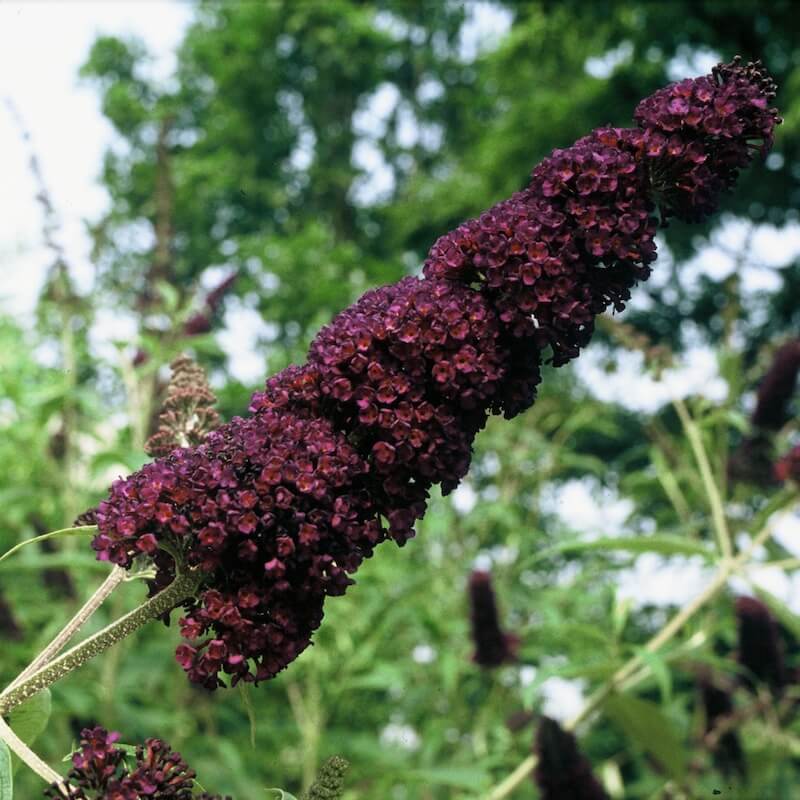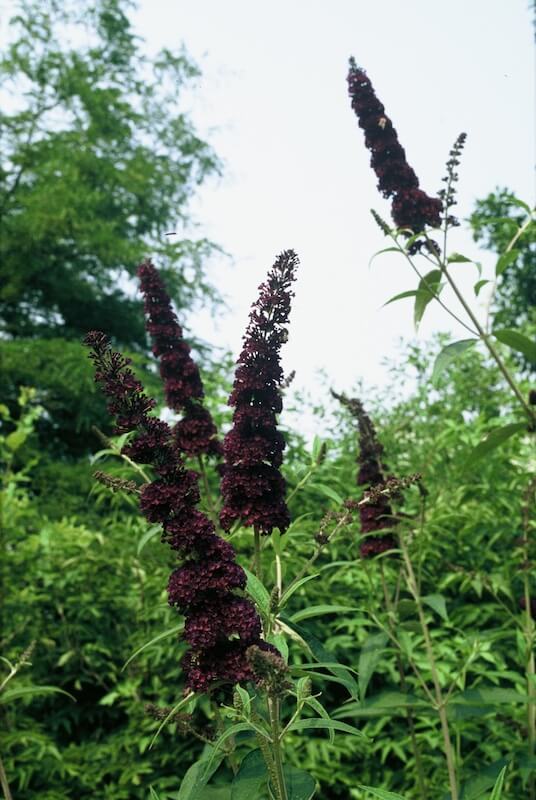
Position
- Prefers full sun for richest flowering and compact growth
- Perfect for mixed borders, wildlife gardens, or as a standalone specimen
- Benefits from shelter from strong, drying winds, especially while young
Hardiness
- Hardy to approximately –15°C (5°F)
- Well suited to most UK gardens; young plants benefit from a deep mulch for winter protection in colder regions
Soil
- Grows best in well-drained, fertile soils but tolerates poorer, sandy, or gravelly ground
- Enjoys soil improved with compost or well-rotted manure to encourage strong shoots and abundant blooms
- Avoid soils that are heavy, clay-based, or prone to waterlogging
- Tolerant of acid, neutral, or alkaline soils
- Very adaptable as long as the drainage is good
- Grab a soil test kit and ensure the perfect conditions for growth
Height
- Typically reaches 2–3 metres (6.5–10 feet) after 5–10 years
- Forms an upright, bushy shrub with arching stems
Seasons of Interest
Additional Notes
- Prune hard in late winter or early spring to promote vigorous new flowering shoots
- Mulch each spring with compost or leaf mould to retain moisture and improve soil health
- Deadhead spent flowers to encourage additional blooms and prevent excessive self-seeding
- Drought-tolerant once established, though it benefits from watering during extended dry spells
- Low maintenance, generally unaffected by pests or diseases
- Can be grown in large containers with regular feeding and watering
Buddleja Black Knight - Attract Butterflies with Dramatic Blooms
Looking to add a dramatic splash of colour and wildlife appeal to your garden? The Buddleja Black Knight butterfly bush might be just the answer. Known for its deep purple flowers and impressive summer performance, this deciduous shrub is as attractive to butterflies as it is to gardeners.
What makes Buddleja davidii Black Knight so special?
This variety stands out with its almost black, deep purple flower spikes, which bloom from midsummer to autumn. The flowers are intensely fragrant, attracting a multitude of butterflies. A recipient of the RHS Award of Garden Merit, Buddleja davidii Black Knight is also valued for its tough, reliable performance in a wide range of UK gardens.
Its grey-green, lance-shaped leaves provide an attractive backdrop to the vivid flowers. With arching stems and a mature height and spread of around 3m, it’s ideal as a specimen shrub, in borders, or along fences.
Where should I plant my butterfly bush?
This fast-growing shrub loves open, sunny spots. It does well as a standalone feature or planted at the back of a border. Its height and spread of around 3m mean it requires some space, so avoid squeezing it into tight spots.
Good companions include ornamental grasses, summer-flowering perennials, or other shrubs with lighter-coloured blooms. Ensure it’s not overshadowed by taller trees or buildings, and allow it room for its arching stems to shine.
What soil and conditions does it prefer?
Buddleja davidii Black Knight prefers well-drained soil. It can tolerate poor conditions, but won’t cope with waterlogged ground. If you’ve clay or compacted soil, mix it well with well-rotted compost and grit to loosen it up.
This deciduous shrub is cold-hardy and happy in UK temperatures. It thrives in areas that reach at least 18°C (64°F) in summer, but can also survive dips well below freezing in winter. A south-facing spot will maximise flowering.

When and how should I prune Buddleja davidii Black Knight?
This shrub benefits from a hard prune in early spring. Cut all stems back to within 30-60cm of the base. Buds from the base will shoot up quickly, producing fresh, vigorous new growth that yields better blooms.
Prune hard every year to keep its size manageable and improve the flower display. Deadheading spent flower spikes in summer can extend the bloom period and reduce unwanted self-seeding. Always use clean, sharp secateurs.
Is Buddleja davidii Black Knight easy to maintain?
Yes, this variety is low maintenance and easy to grow. Once established, it rarely needs watering unless there’s a prolonged dry spell. Mulch around the base of the plant in spring with compost to retain moisture and enhance soil health.
It’s essentially pest and disease-free, although young shoots can occasionally attract aphids. A strong spray of water or an organic soap spray usually sorts that out. Keep the base clear of weeds, and this shrub will reward you with years of fragrant flowers.
What do the flowers look and smell like?
The flowers of Buddleja davidii Black Knight are rich, deep purple—almost black in some lights. The long panicles can reach up to 30cm in length, making a dramatic statement against its grey-green leaves.
These fragrant flowers are a magnet for butterflies, bees, and other pollinators. Their strong scent fills the air on warm days, adding sensory pleasure to the garden. With deadheading, the blooms can continue into early autumn.
Can I grow Buddleja davidii Black Knight in a container?
Although it’s a large shrub, you can grow this variety in a container if you choose a large enough pot. Choose one that’s at least 50cm wide and deep. Use a mix of John Innes No. 3 compost with added grit for improved drainage.
Container-grown plants need regular watering and feeding. Feed monthly during the growing season with a balanced liquid fertiliser. Prune annually in early spring and repot every few years to refresh the compost.
Does Buddleja davidii Black Knight need support or staking?
Not usually. The arching stems are naturally strong and upright, even in windier locations. In very exposed gardens, young plants may benefit from temporary support until they are well-established and have developed a strong root system.
Once mature, the fast-growing shrub develops a strong woody base that holds its structure well. Regular pruning encourages bushy growth and stops the plant from becoming leggy or top-heavy.
Why is Buddleja davidii Black Knight good for wildlife?
This butterfly bush is highly attractive to butterflies and other pollinators. It’s a valuable addition to any wildlife-friendly garden. Its nectar-rich, fragrant flowers provide an important food source through summer.
By planting Buddleja, you’re supporting UK biodiversity. Avoid using pesticides near it and enjoy watching butterflies dance around its blooms. It’s a simple way to encourage life and colour into your outdoor space.
From Darren’s Patch
The Black Knight I grow in my garden holds a special place in my heart—it’s a cutting from a plant that grew in my parents’ garden, which itself came from a cutting I took from my grandad’s garden when I was a teenager. It’s probably the most precious plant I have. Each summer, when the deep purple blooms are alive with butterflies, I’m reminded of the connection between gardens and generations. Beyond its sentimental value, it’s also a fantastic performer—reliable, fragrant, and full of life. If you’re looking for a shrub that brings bold colour and personal joy, this one’s hard to beat.
![]()
Key Points to Remember
- Deep purple, fragrant flowers bloom from midsummer to autumn
- Attracts butterflies and other pollinators
- Fast-growing, low-maintenance, and easy to prune
- Prefers full sun or partial shade and well-drained soil
- Height and spread of around 3m; prune hard in early spring
- Ideal for borders, containers, or as a standalone feature
- Awarded the RHS Award of Garden Merit
- Excellent choice for wildlife-friendly UK gardens
- Strong arching stems and grey-green lance-shaped leaves
- Great colour contrast with lighter-flowered companion plants
Buddleja davidii Black Knight flourishes in full sun, in well-drained, improved soil of any pH, and is hardy down to –15°C (5°F). After 5–10 years, it typically reaches 2–3 m (6.5–10 ft) and provides superb summer-to-early autumn interest with intensely dark purple flower spikes. Easy to care for, simply prune hard in spring, mulch for vigour, deadhead throughout the season, and water if newly planted or during drought. This classic butterfly bush promises stunning colour and robust reliability in UK gardens.
Want to learn about other shrub varieties? Read about Buddleja Masquerade here.
For more information on Shrubs for your garden, please click here.
Frequently Asked Questions
Q: How tall does Buddleja Black Knight grow?
A: Buddleja Black Knight is a fast-growing shrub that can reach up to 3m in height and spread if left unpruned. It forms a graceful, arching shape with long panicles of dark purple flowers from mid to late summer. To manage its size in smaller spaces, prune it hard each spring, encouraging strong new growth and a compact habit. This also ensures the most prolific flowering on the current year’s growth. With proper care, it becomes a long-lived and elegant feature in the garden.
Q: When and how should I prune Buddleja davidii Black Knight?
A: Prune Buddleja davidii Black Knight in early spring, typically March, once the risk of frost has passed. Cut back the previous year’s growth to a low framework of buds near the base. This encourages vigorous new shoots and a profusion of blooms on the current season’s growth. Deadheading spent flower spikes throughout summer can also prolong blooming. Avoid pruning in autumn, as this may expose new growth to winter damage. Regular pruning helps keep the shrub healthy, compact, and in optimal flowering condition.
Q: Where should I plant Buddleja Black Knight?
A: Plant Buddleja Black Knight in full sun or partial shade, ideally in a spot with well-drained soil and good air circulation. A sunny position ensures the most abundant flowering and healthiest growth. This deciduous shrub thrives in borders, wildlife areas, or as a backdrop in mixed planting schemes. Avoid waterlogged ground, which can lead to root rot. Improve poor soils with well-rotted compost or garden compost before planting to ensure good drainage and nutrient content.
Q: How do I feed Buddleja davidii ‘Black Knight’?
A: Feed Buddleja davidii Black Knight in early spring with a balanced, slow-release fertiliser or a general-purpose feed to encourage strong new growth. After pruning, applying garden compost or well-rotted manure around the base of the shrub can also help retain moisture and improve soil structure. Avoid excessive feeding, which may encourage leafy growth at the expense of flowers. Once established, this butterfly bush is low maintenance and generally thrives with minimal additional feeding in fertile soil.
Q: Is Buddleja Black Knight suitable for attracting pollinators?
A: Absolutely. Buddleja davidii Black Knight is one of the best shrubs for attracting butterflies, bees, and other beneficial insects. Its long, fragrant flower spikes produce a rich source of nectar from summer into early autumn. This makes it an essential addition to pollinator-friendly gardens. The dark purple blooms are particularly striking to butterflies, and their prolonged bloom time offers consistent feeding opportunities. For wildlife-conscious gardeners, this butterfly bush provides a combination of ornamental appeal and ecological benefits.
Q: Is Buddleja davidii ‘Black Knight’ easy to grow?
A: Yes, Buddleja davidii Black Knight is an easy-to-grow, low-maintenance perennial shrub. It’s tolerant of a wide range of soil types, provided they are well-drained, and once established, it’s drought-tolerant and rarely troubled by pests or disease. A hard prune in spring, occasional feeding, and full sun are all it needs to thrive. Its resilience and forgiving nature make it suitable for both novice and experienced gardeners, especially those seeking to attract butterflies and add late-summer colour.
Q: Where can I buy Buddleja davidii Black Knight?
A: Buddleja davidii Black Knight is widely available from UK garden centres, online nurseries, and specialist plant retailers. You’ll often find it sold in 2L or 3L pots, ready for planting straight into the garden. When shopping online, look for reputable suppliers that offer healthy, well-rooted specimens with clear care instructions.
